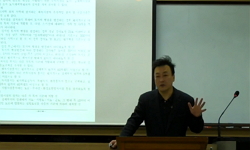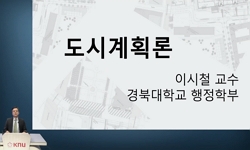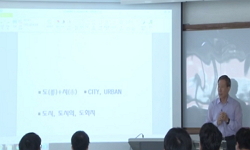Seoul city government made "the 1st Seoul Pedestrian Master Plan(1998)" according to the importance of pedestrian activity in the city, as a result, the series of 'Making Walkable Streets' project - 'making a model street by autonomous districts', 'ma...
http://chineseinput.net/에서 pinyin(병음)방식으로 중국어를 변환할 수 있습니다.
변환된 중국어를 복사하여 사용하시면 됩니다.
- 中文 을 입력하시려면 zhongwen을 입력하시고 space를누르시면됩니다.
- 北京 을 입력하시려면 beijing을 입력하시고 space를 누르시면 됩니다.
보행자의 가로 이미지에 의한 보행가로 경관 특성 분석 : 서울시 보행환경기본계획 사업 가로를 대상으로 = A Study on the Characteristics of Streetscape : focused on the Streets of Seoul Pedestrian Master Plan Project -
한글로보기https://www.riss.kr/link?id=T10931714
- 저자
-
발행사항
서울 : 한양대학교 도시대학원, 2007
-
학위논문사항
학위논문(석사) -- 한양대학교 도시대학원 , 도시건축설계학과 , 2007. 2
-
발행연도
2007
-
작성언어
한국어
- 주제어
-
발행국(도시)
서울
-
형태사항
99 p. ; 26cm.
-
일반주기명
권두에 국문초록 수록
Abstract : p. 95-99
지도교수 : 구자훈
참고문헌 : p. 89-91 - 소장기관
-
0
상세조회 -
0
다운로드
부가정보
다국어 초록 (Multilingual Abstract)
The evaluation of these projects is to obtain good results like improvement of the fundamental pedestrian's environment, while most citizen's recognition are to be short of impressive streets. There are several reasons, the first is insufficient consecrate planning and implement of streetscape, and the second is to be lack of survey of users' streets image and to be poor physical elements for making impressive streets images, and the third reason is to be scarcely any streets with attractive functions for many different types of human behavior.
The purpose of this study is to analyze the characteristics of the projects' streetscape for street design elements to be considered. According to this purpose, this study conducted a questionnaire survey of pedestrians of 9 streets among the projects' streets about images - choosing impressive physical elements and the feeling of the street by the list of adjective of semantic differential scale-and the preference and main behavior, and analyzed constitution of impressive elements by the streets and correlation between the elements of the street and the feeling of users.
The approaches of this study were as follows.
The first, issues and valuation method of the streetscape were derived from a literature survey of the streetscape and the environmental psychology. The second, the adjective list which were used for evaluation of streetscape and the physical elements list of street which were used for choosing the impressive factor were drawn from a preliminary survey of pedestrians which were answered subjective questions. The third, a survey questionnaire with these lists was conducted to 30 persons each street. The fourth, the figure elements, the semi-figure elements, the ground elements were defined according to the frequency and the type of the impressive physical elements which meant 'the imageability'. The Fifth, the psychological factors of the streetscape were derived from the factor analysis, and the correlation analysis between these psychological factors and the figure elements, the semi-figure elements, the ground elements was performed. The sixth, two regression formulas were drawn, the one was a formula between the visual preference and the psychological factors, the other was between the complexity and the psychological factors, and the correlation analysis between these visual preference/the complexity and the impressive physical elements was also performed. The seventh, the visual preference-the human behaviors relations were analyzed by the frequency and the type of behaviors. Finally, the 9 streets were classified by the psychological reaction of the users and the physical elements which were reconstituted in the figure elements, the semi-figure elements, the ground elements.
The results of this study are as follows.
The first, the figure elements means that people recognize them well(more than 50% frequency) and these are unique and single elements on the street, the semi-figure elements were defined that these things were not single, but also could be recognized well by people, and the ground elements are not the single and the acknowledgeable. The most streets(9 streets) would not be founded the figure or the semi-figure elements, therefore it was proved that streets had been poor physical elements for making impressive streets images.
The second, the correlation between the figure elements, the semi-figure elements, the ground elements and the feeling of people were the figure elements related to 'old fashioned, tasteful, intimate' feeling, the semi-figure elements related to 'urban, dynamic, complex' feeling, and the groudn figure elements related to ' uniform, static' feeling.
The third, psychological factors which influenced on the visual preference were 'aesthetic & order sense', 'energetic & mysterious sense', 'convenient & safe sense', and 'sense with time' , and many sign boards were founded to have bad influence on the preference. In case of the complexity, 'aesthetic & order sense', 'energetic & mysterious sense', 'convenient & safe sense', 'sense with time', and 'the height of buildings' were related to, and it also had correlation deterioration of buildings, showcases, pavement conditions, signboards, street-furnitures, human activities, and a unique natural resource around the street.
The fourth, the correlation between psychological factors and impressive physical elements were that 'aesthetic & order sense' related to a symbolic tower on the street, signboards, and street-furnitures, and 'energetic & mysterious sense' related to human activities, and 'convenient & safe sense' related to the height of buildings, the shape of the street, and the resting place on the street.
The fifth, as the visual preference were higher, the frequency of the optional activities on the street would be higher, but as the preference were lower, the frequency of the necessary activities would be higher.
Finally, the type of 9 streets which were classified by street images of pedestrians were 'urban dynamic type(Myungdong-gil, Myungmul street)' which were constituted in the complex semi-figure elements, 'urban amenity enhancing type(Insadong-gil, Daehaak-ro, Univ.Hongik' reformed street of expired railroad)' showed high preference, 'historic-static type(Donhwamun-ro, Jungdong-gil) were constituted in the static and calm ground elements, and 'cut-and-dried type(Yeouido station-gil, Apgujeong-ro)' were streets without any character.
Seoul city government made "the 1st Seoul Pedestrian Master Plan(1998)" according to the importance of pedestrian activity in the city, as a result, the series of 'Making Walkable Streets' project - 'making a model street by autonomous districts', 'making historic & cultural streets', etc- have been performed since 2001.
The evaluation of these projects is to obtain good results like improvement of the fundamental pedestrian's environment, while most citizen's recognition are to be short of impressive streets. There are several reasons, the first is insufficient consecrate planning and implement of streetscape, and the second is to be lack of survey of users' streets image and to be poor physical elements for making impressive streets images, and the third reason is to be scarcely any streets with attractive functions for many different types of human behavior.
The purpose of this study is to analyze the characteristics of the projects' streetscape for street design elements to be considered. According to this purpose, this study conducted a questionnaire survey of pedestrians of 9 streets among the projects' streets about images - choosing impressive physical elements and the feeling of the street by the list of adjective of semantic differential scale-and the preference and main behavior, and analyzed constitution of impressive elements by the streets and correlation between the elements of the street and the feeling of users.
The approaches of this study were as follows.
The first, issues and valuation method of the streetscape were derived from a literature survey of the streetscape and the environmental psychology. The second, the adjective list which were used for evaluation of streetscape and the physical elements list of street which were used for choosing the impressive factor were drawn from a preliminary survey of pedestrians which were answered subjective questions. The third, a survey questionnaire with these lists was conducted to 30 persons each street. The fourth, the figure elements, the semi-figure elements, the ground elements were defined according to the frequency and the type of the impressive physical elements which meant 'the imageability'. The Fifth, the psychological factors of the streetscape were derived from the factor analysis, and the correlation analysis between these psychological factors and the figure elements, the semi-figure elements, the ground elements was performed. The sixth, two regression formulas were drawn, the one was a formula between the visual preference and the psychological factors, the other was between the complexity and the psychological factors, and the correlation analysis between these visual preference/the complexity and the impressive physical elements was also performed. The seventh, the visual preference-the human behaviors relations were analyzed by the frequency and the type of behaviors. Finally, the 9 streets were classified by the psychological reaction of the users and the physical elements which were reconstituted in the figure elements, the semi-figure elements, the ground elements.
The results of this study are as follows.
The first, the figure elements means that people recognize them well(more than 50% frequency) and these are unique and single elements on the street, the semi-figure elements were defined that these things were not single, but also could be recognized well by people, and the ground elements are not the single and the acknowledgeable. The most streets(9 streets) would not be founded the figure or the semi-figure elements, therefore it was proved that streets had been poor physical elements for making impressive streets images.
The second, the correlation between the figure elements, the semi-figure elements, the ground elements and the feeling of people were the figure elements related to 'old fashioned, tasteful, intimate' feeling, the semi-figure elements related to 'urban, dynamic, complex' feeling, and the groudn figure elements related to ' uniform, static' feeling.
The third, psychological factors which influenced on the visual preference were 'aesthetic & order sense', 'energetic & mysterious sense', 'convenient & safe sense', and 'sense with time' , and many sign boards were founded to have bad influence on the preference. In case of the complexity, 'aesthetic & order sense', 'energetic & mysterious sense', 'convenient & safe sense', 'sense with time', and 'the height of buildings' were related to, and it also had correlation deterioration of buildings, showcases, pavement conditions, signboards, street-furnitures, human activities, and a unique natural resource around the street.
The fourth, the correlation between psychological factors and impressive physical elements were that 'aesthetic & order sense' related to a symbolic tower on the street, signboards, and street-furnitures, and 'energetic & mysterious sense' related to human activities, and 'convenient & safe sense' related to the height of buildings, the shape of the street, and the resting place on the street.
The fifth, as the visual preference were higher, the frequency of the optional activities on the street would be higher, but as the preference were lower, the frequency of the necessary activities would be higher.
Finally, the type of 9 streets which were classified by street images of pedestrians were 'urban dynamic type(Myungdong-gil, Myungmul street)' which were constituted in the complex semi-figure elements, 'urban amenity enhancing type(Insadong-gil, Daehaak-ro, Univ.Hongik' reformed street of expired railroad)' showed high preference, 'historic-static type(Donhwamun-ro, Jungdong-gil) were constituted in the static and calm ground elements, and 'cut-and-dried type(Yeouido station-gil, Apgujeong-ro)' were streets without any character.
국문 초록 (Abstract)
대부분의 가로 사업이 완료된 시점에서 기초보행환경의 개선 등과 같은 긍정적 평가도 있는 반면, 대부분의 시민들의 가로에 대한 인식은 '인상에 남는 보행가로가 부족하다 '라는 지적이다. 이에 대한 이유는 경관적 차원의 구체적인 계획과 실행이 미비하고, 이용자의 공공이미지(public image)에 대한 사전조사의 미흡함과 공공이미지를 형성하는 인상적인 물리적 요소가 약하며, 사람들의 다양한 행태를 유도하기 위한 가로의 기능이 부족하기 때문이다.
본 연구에서는 서울시 보행환경기본계획 사업 가로들을 대상으로 지각-인지단계의 가로 이미지(인상적인 인지 요소 및 가로 전체에 대한 느낌)와 태도 단계의 선호도, 주요 행태에 대한 설문조사를 직접 이 가로를 체험한 이들에게 실시한 후, 그 결과를 바탕으로 가로별 이미지를 형성하는 인상적인 물리적 요소의 분포 특성과 물리적 요소와 보행자의 가로에 대한 느낌(심리량) 간의 관계를 분석하여 현 보행가로의 경관적 특성을 살펴보고자 한다.
본 연구의 구체적인 진행방법은 다음과 같다.
첫째, 보행가로 경관과 환경의 지각-인지 관련 이론 및 선행연구를 통하여 보행가로 경관의 주요 이슈 및 평가방법을 도출한다. 둘째, 주관식의 자유기입식 예비설문을 통해 일반인들이 사용하는 공공이미지 평가 형용사 어휘 및 인상적인 물리적 요소 평가 항목을 선정한다. 셋째, 선정된 항목을 통해 본 설문조사를 실시하여 이미지성(imageability)의 정도에 따라 도형요소(figure)·도형적 요소(semi-figure)·배경 요소(ground)를 정의하고 이에 대한 기준을 도출한 후, 각 요소에 대한 가로별 종류 및 분포 정도를 살펴본다. 넷째, 요인분석 기법을 적용하여 보행가로 경관평가 시 주요한 심리요인을 도출하고, 도출된 주요 심리요인과 도형요소·도형적 요소·배경 요소와의 상관분석을 한다. 다섯째, 선호도와 복잡성에 영향을 미치는 심리요인들 간의 관계를 통해 회귀식을 도출하고, 선호도 및 복잡성과 관련있는 물리적 요소들을 상관분석한다. 여섯째, 가로공간 내에서의 주요 행태의 종류 및 빈도 설문을 통해 가로별 선호도와 주요 행태와의 관계도 살펴보고자 한다. 마지막으로, 도형요소·도형적 요소·배경요소에 대한 선택빈도수와 가로에 대한 느낌에 대한 심리량을 바탕으로 각각 군집분석을 하여 대상가로들을 유형화한다.
분석결과를 종합하면 다음과 같다.
설문결과를 바탕으로 인상적인 물리적 요소를 정의하면 사람들의 선택빈도가 높으면서, 가로내 유일한 특정요소를 도형요소라 하고, 비록 특정요소는 아니지만 선택빈도가 높은 요소를 도형적 요소라고 하며, 그 외의 요소들을 배경요소라 한다. 이러한 기준에 의해 가로별 요소의 분포를 살펴보면, 도형요소가 거의 없고, 도형적 요소로 지적된 것 역시 가로의 형태보다는 가로의 기능과 성격을 나타내는 요소들로 나타났다. 이와 같은 결과는 인상적인 보행가로의 부재 원인으로 지적된 '가로내 인상적인 물리적 요소의 부족'이 반영된 결과라 할 수 있다.
도형요소·도형적 요소·배경요소가 사람들의 가로에 대한 느낌과의 상관성을 분석한 결과에 의하면, 도형요소의 경우에는 오래됨, 운치감, 친근감을 나타내는 형용사 어휘와 관련 있고, 도형적 요소의 경우에는 도시성, 활기참, 복잡함 등의 형용사 어휘와 관련 있다. 반면, 배경요소는 통일감 있고, 정적인 느낌과 상관성이 높은 것으로 나타났다.
선호도에 영향을 미치는 심리요인은 '심미성 및 정연성'과 '활동성 및 신비성', '편리성 및 안전성', '시간성'으로 나타났고, 간판이 선호도에 가장 부정적인 영향을 미치는 요소로 나타났다. 선호도와 함께 심리적 접근방법에서 중요하게 취급되는 복잡성의 경우에는 '심미성 및 정연성', '활동성 및 신비성','편리성 및 안전성', '건물높이', '시간성'에 의해 영향을 받는 것으로 나타났고, 가로 구성요소와 관계에 있어서는 건물노후화, 쇼윈도우, 보도패턴 및 색, 노후화 , 간판, 가로수 및 화단, 가로시설물, 인간활동, 주변특정 산, 하천의 요소와 상관관계가 있는 것으로 나타났다. 한편, 심리요인과 인상적인 물리적 요소와의 상관분석 결과, '심미성 및 정연성'은 가로내 상징타워와 간판, 가로시설물과 관계가 높고, '활동성 및 신비성'과는 인간활동량이 상관관계가 있는 것으로 나타났다. '편리성 및 안전성'은 가로 건물높이와 가로형태, 가로내 휴게공간 및 휴게시설이 상관관계가 있는 것으로 나타났다.
선호도와 주요 행태와의 관계를 살펴보면, 선호도가 높게 나타난 정동길, 인사동길, 대학로의 경우에는 선택적 활동의 비율에서도 가장 높은 비율을 나타낸 반면, 선호도가 낮은 압구정로, 여의도역길, 명물거리, 돈화문로의 경우에는 필수적 활동의 비율이 가장 높게 나타났다.
가로 이미지에 의한 보행가로의 유형화 결과는 복잡성이 높게 나타나는 도형적 요소에 의한 '도시적 다이내믹형(명동길, 명물거리)', 전체적으로 높은 선호도를 나타내는 '도시적 어메니티 고양형(인사동길, 대학로, 홍대폐철도개조거리)', 배경요소에 의해 한적하면서도 조용한 '역사적·정적형(돈화문로, 정동길)', 특징이 거의 없는 '무미건조형(여의도역길, 압구정로)'의 가로로서 분류되었다.
도시공간에서의 보행활동의 중요성에 따라 서울시에서는 보행환경기본계획(1차, 1998)을 수립하고, '걷고싶은 거리만들기' 사업의 일환으로 '시범가로 조성사업', '역사문화탐방로 조성사업' ...
도시공간에서의 보행활동의 중요성에 따라 서울시에서는 보행환경기본계획(1차, 1998)을 수립하고, '걷고싶은 거리만들기' 사업의 일환으로 '시범가로 조성사업', '역사문화탐방로 조성사업' 등의 다양한 보행가로 조성 및 정비 사업을 진행 중에 있다.
대부분의 가로 사업이 완료된 시점에서 기초보행환경의 개선 등과 같은 긍정적 평가도 있는 반면, 대부분의 시민들의 가로에 대한 인식은 '인상에 남는 보행가로가 부족하다 '라는 지적이다. 이에 대한 이유는 경관적 차원의 구체적인 계획과 실행이 미비하고, 이용자의 공공이미지(public image)에 대한 사전조사의 미흡함과 공공이미지를 형성하는 인상적인 물리적 요소가 약하며, 사람들의 다양한 행태를 유도하기 위한 가로의 기능이 부족하기 때문이다.
본 연구에서는 서울시 보행환경기본계획 사업 가로들을 대상으로 지각-인지단계의 가로 이미지(인상적인 인지 요소 및 가로 전체에 대한 느낌)와 태도 단계의 선호도, 주요 행태에 대한 설문조사를 직접 이 가로를 체험한 이들에게 실시한 후, 그 결과를 바탕으로 가로별 이미지를 형성하는 인상적인 물리적 요소의 분포 특성과 물리적 요소와 보행자의 가로에 대한 느낌(심리량) 간의 관계를 분석하여 현 보행가로의 경관적 특성을 살펴보고자 한다.
본 연구의 구체적인 진행방법은 다음과 같다.
첫째, 보행가로 경관과 환경의 지각-인지 관련 이론 및 선행연구를 통하여 보행가로 경관의 주요 이슈 및 평가방법을 도출한다. 둘째, 주관식의 자유기입식 예비설문을 통해 일반인들이 사용하는 공공이미지 평가 형용사 어휘 및 인상적인 물리적 요소 평가 항목을 선정한다. 셋째, 선정된 항목을 통해 본 설문조사를 실시하여 이미지성(imageability)의 정도에 따라 도형요소(figure)·도형적 요소(semi-figure)·배경 요소(ground)를 정의하고 이에 대한 기준을 도출한 후, 각 요소에 대한 가로별 종류 및 분포 정도를 살펴본다. 넷째, 요인분석 기법을 적용하여 보행가로 경관평가 시 주요한 심리요인을 도출하고, 도출된 주요 심리요인과 도형요소·도형적 요소·배경 요소와의 상관분석을 한다. 다섯째, 선호도와 복잡성에 영향을 미치는 심리요인들 간의 관계를 통해 회귀식을 도출하고, 선호도 및 복잡성과 관련있는 물리적 요소들을 상관분석한다. 여섯째, 가로공간 내에서의 주요 행태의 종류 및 빈도 설문을 통해 가로별 선호도와 주요 행태와의 관계도 살펴보고자 한다. 마지막으로, 도형요소·도형적 요소·배경요소에 대한 선택빈도수와 가로에 대한 느낌에 대한 심리량을 바탕으로 각각 군집분석을 하여 대상가로들을 유형화한다.
분석결과를 종합하면 다음과 같다.
설문결과를 바탕으로 인상적인 물리적 요소를 정의하면 사람들의 선택빈도가 높으면서, 가로내 유일한 특정요소를 도형요소라 하고, 비록 특정요소는 아니지만 선택빈도가 높은 요소를 도형적 요소라고 하며, 그 외의 요소들을 배경요소라 한다. 이러한 기준에 의해 가로별 요소의 분포를 살펴보면, 도형요소가 거의 없고, 도형적 요소로 지적된 것 역시 가로의 형태보다는 가로의 기능과 성격을 나타내는 요소들로 나타났다. 이와 같은 결과는 인상적인 보행가로의 부재 원인으로 지적된 '가로내 인상적인 물리적 요소의 부족'이 반영된 결과라 할 수 있다.
도형요소·도형적 요소·배경요소가 사람들의 가로에 대한 느낌과의 상관성을 분석한 결과에 의하면, 도형요소의 경우에는 오래됨, 운치감, 친근감을 나타내는 형용사 어휘와 관련 있고, 도형적 요소의 경우에는 도시성, 활기참, 복잡함 등의 형용사 어휘와 관련 있다. 반면, 배경요소는 통일감 있고, 정적인 느낌과 상관성이 높은 것으로 나타났다.
선호도에 영향을 미치는 심리요인은 '심미성 및 정연성'과 '활동성 및 신비성', '편리성 및 안전성', '시간성'으로 나타났고, 간판이 선호도에 가장 부정적인 영향을 미치는 요소로 나타났다. 선호도와 함께 심리적 접근방법에서 중요하게 취급되는 복잡성의 경우에는 '심미성 및 정연성', '활동성 및 신비성','편리성 및 안전성', '건물높이', '시간성'에 의해 영향을 받는 것으로 나타났고, 가로 구성요소와 관계에 있어서는 건물노후화, 쇼윈도우, 보도패턴 및 색, 노후화 , 간판, 가로수 및 화단, 가로시설물, 인간활동, 주변특정 산, 하천의 요소와 상관관계가 있는 것으로 나타났다. 한편, 심리요인과 인상적인 물리적 요소와의 상관분석 결과, '심미성 및 정연성'은 가로내 상징타워와 간판, 가로시설물과 관계가 높고, '활동성 및 신비성'과는 인간활동량이 상관관계가 있는 것으로 나타났다. '편리성 및 안전성'은 가로 건물높이와 가로형태, 가로내 휴게공간 및 휴게시설이 상관관계가 있는 것으로 나타났다.
선호도와 주요 행태와의 관계를 살펴보면, 선호도가 높게 나타난 정동길, 인사동길, 대학로의 경우에는 선택적 활동의 비율에서도 가장 높은 비율을 나타낸 반면, 선호도가 낮은 압구정로, 여의도역길, 명물거리, 돈화문로의 경우에는 필수적 활동의 비율이 가장 높게 나타났다.
가로 이미지에 의한 보행가로의 유형화 결과는 복잡성이 높게 나타나는 도형적 요소에 의한 '도시적 다이내믹형(명동길, 명물거리)', 전체적으로 높은 선호도를 나타내는 '도시적 어메니티 고양형(인사동길, 대학로, 홍대폐철도개조거리)', 배경요소에 의해 한적하면서도 조용한 '역사적·정적형(돈화문로, 정동길)', 특징이 거의 없는 '무미건조형(여의도역길, 압구정로)'의 가로로서 분류되었다.
목차 (Table of Contents)
- 제Ⅰ장 서론 = 1
- 제 1 절 연구의 배경 및 목적 = 1
- 1. 연구의 배경 = 1
- 2. 연구의 목적 = 3
- 제 2 절 연구의 범위 및 방법 = 3
- 제Ⅰ장 서론 = 1
- 제 1 절 연구의 배경 및 목적 = 1
- 1. 연구의 배경 = 1
- 2. 연구의 목적 = 3
- 제 2 절 연구의 범위 및 방법 = 3
- 1. 연구의 범위 = 3
- 2. 연구의 방법 = 4
- 제Ⅱ장 보행가로 경관 관련 이론 및 선행 연구 검토 = 7
- 제 1 절 보행가로 경관 관련 이론 = 7
- 1. 보행가로 경관의 개념 및 유형 = 7
- 2. 보행가로 경관의 구성요소 = 10
- 3. 보행가로 경관의 평가대상 및 방법 = 11
- 제 2 절 환경 지각 및 인지 관련 이론 = 13
- 1. 환경 지각 및 인지과정에 관한 개요 = 13
- 2. 환경지각(perception) = 15
- 3. 환경인지(cognition) = 19
- 4. 환경에 대한 태도(attitude) 및 행동(behavior) = 21
- 제 3 절 선행 연구 검토 = 24
- 1. 보행공간 관련 이론고찰 및 설계방법 연구 = 24
- 2. 지각 및 인지적 접근방법에 의한 경관평가 관련 연구 = 25
- 3. 선호도에 의한 경관평가 관련 연구 = 26
- 제 4 절 소결 = 28
- 제Ⅲ장 분석의 틀 = 29
- 제 1 절 연구 진행과정 및 단계별 내용 = 29
- 제 2 절 대상가로 선정 = 30
- 1. 서울시 '걷고싶은 거리 만들기' 사업가로 = 30
- 2. 최종 대상가로 선정 = 34
- 3. 대상가로 현황개요 = 36
- 제 3 절 설문 항목 선정을 위한 예비연구 = 39
- 1. 선정방법 = 39
- 2. 물리적 지각요소 항목 선정 = 39
- 3. 인지 이미지 평가 형용사 항목 선정 = 40
- 4. 주요 행태 항목 선정 = 41
- 제 4 절 설문 설계 = 42
- 1. 설문 개요 = 42
- 2. 설문내용 및 응답방법 = 44
- 제 5 절 분석 내용 및 방법 = 45
- 1. 이용자 특성에 의한 가로이용특성 분석 = 46
- 2. 가로 이미지에 의한 경관특성 분석 [지각?인지 단계] = 46
- 3. 선호도 및 복잡성, 주요 행태에 의한 경관특성 분석[태도적 단계] = 47
- 4. 가로 이미지에 의한 보행가로의 유형화 = 47
- 제Ⅳ장 가로 이미지 및 태도에 의한 보행가로 경관 분석 = 48
- 제 1 절 보행자 특성에 의한 보행가로 이용특성 분석 = 48
- 1. 설문조사 개요 = 48
- 2. 보행가로 이용특성 분석 = 48
- 제 2 절 가로 이미지에 의한 보행가로 경관 특성 분석 = 51
- 1. 가로유형별 도형 및 배경요소 분석 = 51
- 2. 가로에 대한 느낌(심리량)의 주요 심리요인 분석 = 61
- 제 3 절 태도적 차원의 보행가로 경관 특성 분석 = 64
- 1. 선호도 및 복잡성과 심리요인간의 관계 = 64
- 2. 도형 및 배경요소와 선호도 및 복잡성간의 상관분석 = 67
- 3. 가로별 선호도와 주요 행태 관계 분석 = 67
- 제 4 절 가로 이미지에 의한 보행가로 유형화 = 71
- 1. 도형요소?도형적 요소?배경요소에 대한 군집분석(요소형) = 72
- 2. 보행가로에 대한 느낌(심리량)에 대한 군집분석(의식형) = 74
- 3. 가로 이미지에 의한 보행가로 유형 = 75
- 제 5 절 분석의 종합 = 77
- 제Ⅴ장 결론 및 = 시사점
- 제 1 절 연구의 요약 = 81
- 제 2 절 시사점 = 85
- 참고문헌 = 89
- 1. 단행본 및 보고서 = 89
- 2. 학위논문 및 학회지 = 90
- 부록-설문지 = 92
- 영문초록 = 95












